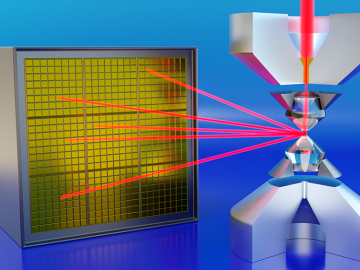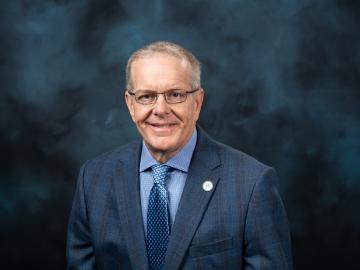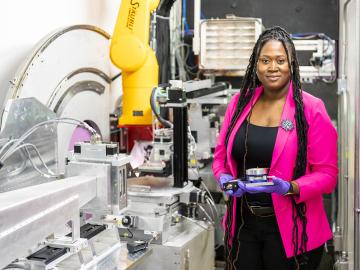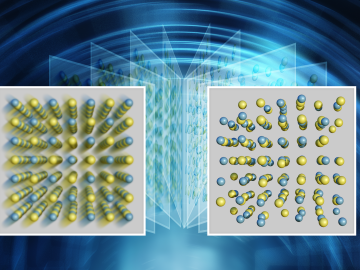
Filter News
Area of Research
- (-) Materials (26)
- (-) National Security (12)
- (-) Neutron Science (33)
- (-) Nuclear Science and Technology (1)
- Advanced Manufacturing (2)
- Biological Systems (1)
- Biology and Environment (47)
- Building Technologies (1)
- Electricity and Smart Grid (1)
- Energy Science (46)
- Fusion and Fission (1)
- Isotopes (1)
- Supercomputing (17)
News Topics
- (-) 3-D Printing/Advanced Manufacturing (8)
- (-) Bioenergy (4)
- (-) Environment (5)
- (-) Grid (4)
- (-) Machine Learning (7)
- (-) Neutron Science (35)
- (-) Quantum Science (1)
- (-) Transportation (7)
- Advanced Reactors (3)
- Artificial Intelligence (7)
- Big Data (2)
- Biology (1)
- Biomedical (7)
- Biotechnology (1)
- Buildings (3)
- Chemical Sciences (17)
- Clean Water (1)
- Composites (4)
- Computer Science (6)
- Coronavirus (2)
- Critical Materials (4)
- Cybersecurity (7)
- Energy Storage (7)
- Fossil Energy (1)
- Fusion (4)
- High-Performance Computing (4)
- Irradiation (1)
- Isotopes (8)
- Materials (44)
- Materials Science (15)
- Microscopy (7)
- Molten Salt (4)
- Nanotechnology (12)
- National Security (14)
- Nuclear Energy (14)
- Partnerships (9)
- Physics (13)
- Polymers (7)
- Quantum Computing (2)
- Security (3)
- Space Exploration (2)
Media Contacts

ORNL scientists found that a small tweak created big performance improvements in a type of solid-state battery, a technology considered vital to broader electric vehicle adoption.

Rigoberto Advincula, a renowned scientist at ORNL and professor of Chemical and Biomolecular Engineering at the University of Tennessee, has won the Netzsch North American Thermal Analysis Society Fellows Award for 2023.

Nonfood, plant-based biofuels have potential as a green alternative to fossil fuels, but the enzymes required for production are too inefficient and costly to produce. However, new research is shining a light on enzymes from fungi that could make biofuels economically viable.

For decades, scientists sought a way to apply the outstanding analytical capabilities of neutrons to materials under pressures approaching those surrounding the Earth’s core.

Few things carry the same aura of mystery as dark matter. The name itself radiates secrecy, suggesting something hidden in the shadows of the Universe.

Craig Blue, Defense Manufacturing Program Director at the Department of Energy’s Oak Ridge National Laboratory, was recently elected to a two-year term on the Institute for Advanced Composites Manufacturing Innovation Consortium Council, a body of professionals from academia, state governments, and national laboratories that provides strategic direction and oversight to IACMI.

How did we get from stardust to where we are today? That’s the question NASA scientist Andrew Needham has pondered his entire career.

A chemist from Oak Ridge National Laboratory attracted national attention when her advocacy for science education made People magazine’s annual “Women Changing the World” issue.

Scientists have long sought to better understand the “local structure” of materials, meaning the arrangement and activities of the neighboring particles around each atom. In crystals, which are used in electronics and many other applications, most of the atoms form highly ordered lattice patterns that repeat. But not all atoms conform to the pattern.
The Autonomous Systems group at ORNL is in high demand as it incorporates remote sensing into projects needing a bird’s-eye perspective.


